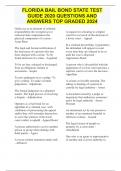Inhoudsopgave
Big Data in Accounting: An Overview [Vasarhelyi et al; 2015].........................................................................2
A design science research methodology and its application to accounting information systems research
[Guido L Geerts; 2011]................................................................................................................................... 7
Critical Success Factors for Data Governance: A Theory Building Approach [Alhassan et al; 2019]..................10
Trusted Decision-Making: Data Governance for Creating Trust in Data Science Decision Outcomes [Brous and
Janssen; 2020]............................................................................................................................................. 13
Continuous Auditing in ERP System Environments: The Current State and Future Directions [Kuhn and Sutton;
2010]........................................................................................................................................................... 18
Continuous Auditing and Continuous Monitoring in ERP Environments: Case Studies of Application
Implementations [Singh, K., Best, P., Bojilov, M.: 2014].................................................................................22
Big Data and Analytics in the Modern Audit Engagement: Research Needs [Appelbaum and Vasarhelyi; 2017]
.................................................................................................................................................................... 25
Impact of business analytics and enterprise systems on managerial accounting [Appelbaum et al.; 2017].....30
Reducing false positives in fraud detection: Combining the red flag approach with process mining [Baader
and Krcmar; 2018]........................................................................................................................................ 35
A taxonomy to guide research on the application of data mining to fraud detection in financial statement
audits [Gray and Debreceny; 2014]............................................................................................................... 38
Consequences of XBRL Standardization on Financial Statement Data [Vasarhelyi et al.; 2018].......................42
Robotic Process Automation [van der Aalst et al.; 2018]...............................................................................45
Applying robotic process automation (RPA) in auditing: A framework [Huang and Vasarhelyi; 2019].............47
,Big Data in Accounting: An Overview [Vasarhelyi et al;
2015]
Introduction
This article sheds light on the meaning of Big Data in the accounting and auditing domains.
The meaning of Big Data
The meaning of Big Data differs across various domains.
- Determined by whether these data push the limit of capabilities of information systems that
work with these data.
- The usage of the term Big Data implies that the amount of data is at or beyond the limit of
what the relevant information systems can store and/or process.
The specific features of Big Data that challenge the capabilities of modern information systems
are known as the 4 Vs that have come to define the term Big Data namely:
o huge Volume,
o high Velocity,
o huge Variety, and
o uncertain Veracity
Because of huge volume and high velocity (snelheid), the application of continuous auditing (CA) is
becoming more and more relevant for enabling automated and real-time analysis of such data. Huge
variety (verscheidenheid, veel soorten) and uncertain veracity (waarheid, klopt de data?) may present
challenges that are beyond the capability of current batch-oriented systems in CA.
Size of storage
depending on the type of information system at hand a ‘‘Big Dataset,’’ from the point of view of
medium- to large-size enterprises, can range from a terabyte or two to several hundred terabytes,
from the storage capacity point of view.
Processing
The greater the computational complexity required by the accounting or audit task, the ‘‘bigger’’ a
particular dataset will look.
The computational tasks form a natural hierarchy, with the simplest ones utilizing everything that can
be stored, and as the complexity of computation increases, the proportion of the data used in the
analysis will become progressively smaller.
The sources of Big Data in accounting and auditing are both internal and external. What may
constitute internal data to one entity may be considered external data to another entity up and down
the supply chain.
Why does Big Data Matter
Corporations, seeking a competitive advantage, have progressively expanded the scope of their
information systems from traditional data processing to automated data capture where they rely on
automated sensing to fully automate their management and production support systems.
CHANGES IN RESEARCH AND PRACTICE PRECIPITATED BY BIG DATA
Big Data as described above is changing the frame of business measurement and its assurance.
Organizations are being given opportunities to capture transactions before their official accounting
recording, identify inventory movement prior to its actual receipt or delivery, identify customer calls
,before actual service actions are taken, and many other forms of economic activity identification.
Furthermore, these same and other anticipatory measurements and techniques of predictive auditing
(Vasarhelyi and Kuenkaikaew 2013) can be applied to measurement assurance.
Accounting in Big Data
Although changes in accounting practices and standards in response to Big Data have yet to happen,
Big Data has the potential to cause a paradigm shift allowing economic activities to be traced and
measured earlier and deeper. A chronology of technological events can explain the evolution of
technology and accounting.
- Before computers, organizations retained only summary accounting data via the chart of
accounts/general ledger. Individual transaction information was not accessible or only
accessible with great effort. This information was first verbal, then written, and then
organized in special paper records.
- Advances in computers made it possible to store and retain complete information about all
transactions.
- Technology enabled businesses to become truly global, however regional differences pose
serious difficulties to compatibility across regions.
Accounting measurement has progressively lost its informational value with a substantial reduction of
market value explanation by accounting variables. This loss of information value is particularly
pronounced for the new knowledge- intensive firms having higher intangible intensity, which claim a
progressively growing share of the economy.
The economy is being supported by real-time processes while its public measurement is quarterly or
annually and rich of anachronistic aggregations.
As the loss of accounting information value has progressed, companies have dramatically expanded
their traditional data stores, thus keeping large databases in their ERP systems of which only a
minimal portion is directly related to financial reporting.
The Expanding Ecosystem of Corporate Data
Data expands in scope by
collecting details. This allowed a
substantive increase in data
analysis applications including
inventory control and detecting
related products, in addition to
individual product preferences.
Linked with traditional data, the
new types and amounts of new
data create opportunities that are
very rich for additional analytics
and for increasing the operational
value of data analysis.
An additional domain of data,
which has progressively integrated
into traditional data structures,
relates to tracking Internet usage
at the organization’s facilities. The
advent of ubiquitous cell phone
, use gives rise to mobility data and presents an additional major type of data collection. Linking this to
traditional sources of data could provide powerful explanations and predictive information on how
accounting information relates to customer behavior.
Data Bridges
Business is finding greater value when
it links automatically captured and
outside data sources. Bridge
applications are emerging providing
links to corporate information systems
and feeding applications previously
not imagined.
These bridges are frequently less
accurate than more traditional links
and may depend on a series of
transformations, each stochastic in
nature, to enrich the context of the
‘‘expanded traditional data.’’ Figure 2
represents a set of business processes
and illustrates the linkages and
additional value provided by linking
Big Data to these processes. Both
accounting and assurance processes
can be enriched.
Figure 3 adds functional continuity equations that link Big Data receptacles/data streams to the
process measurements depicted in Figure 2. Furthermore, it illustrates the complementarity of the
three Big Data sources.











